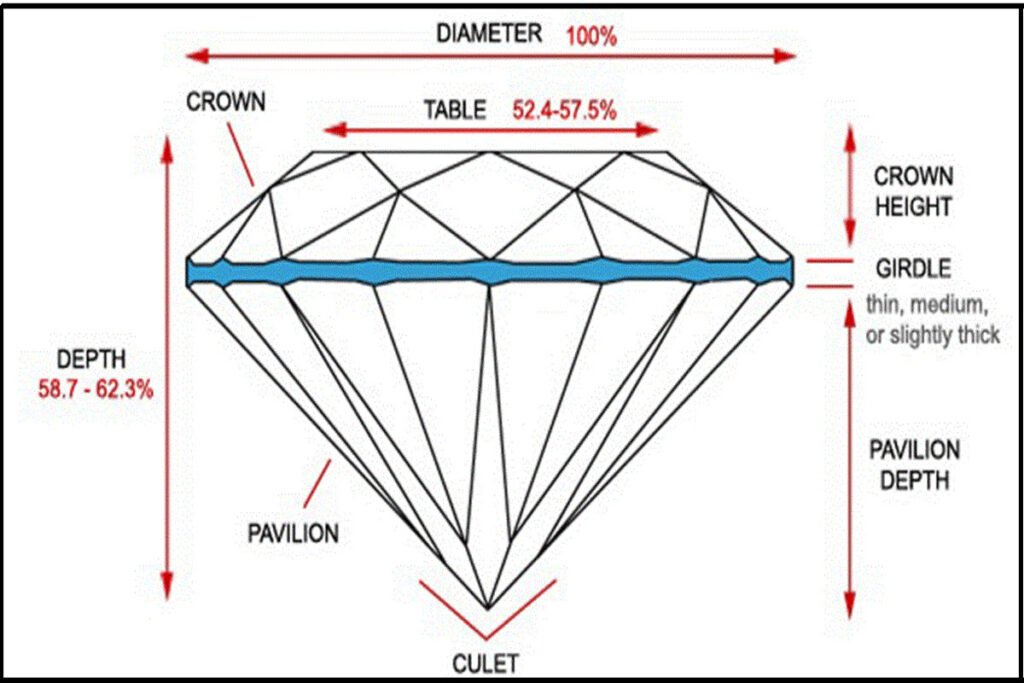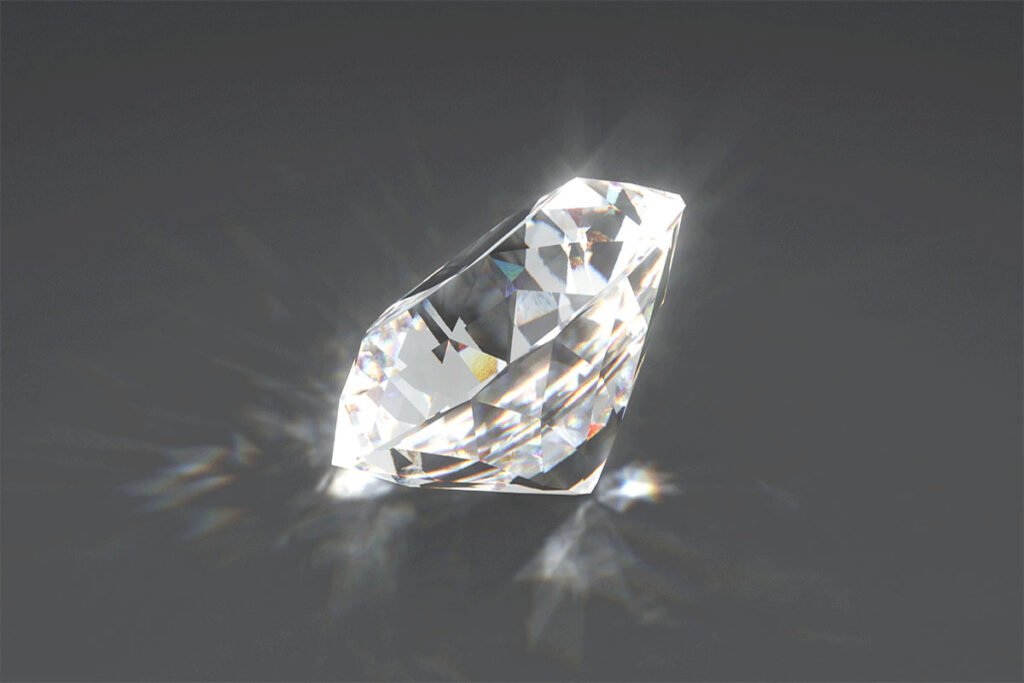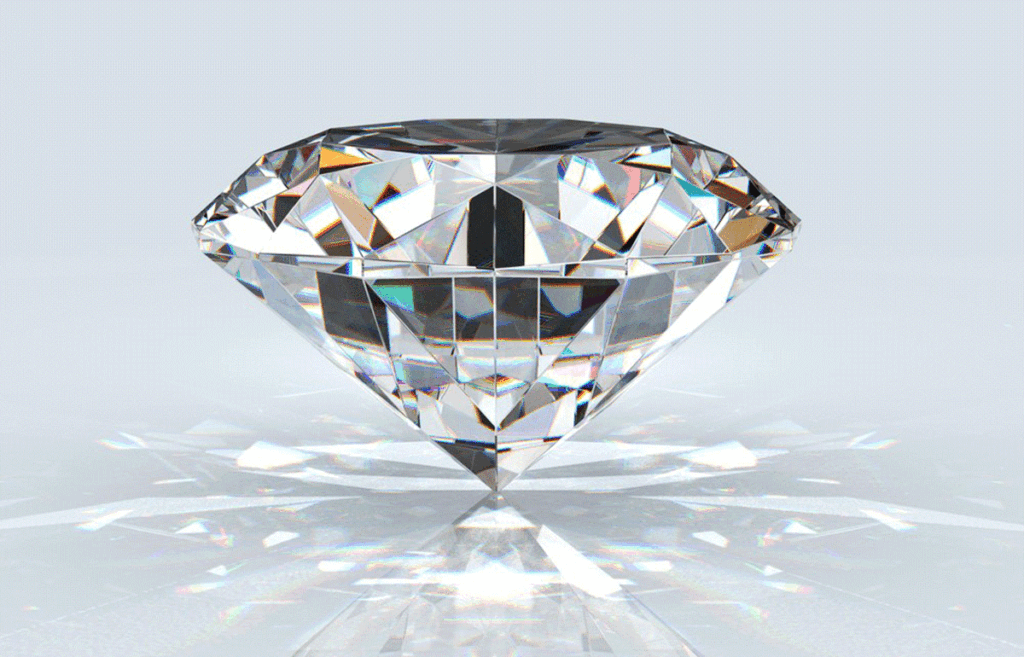One of the better definitions of the word proportion is to “adjust or regulate (something) so that it has a particular or suitable relationship to something else.” And in the world of jewelry, diamond proportion plays a very crucial part.
All About Perfect Diamond Proportion
Diamond proportion could spell the difference between an engagement ring (such as the one in this Andrews Jewelers review)that is colorfully alive and one that is dull and lifeless. Inexperienced diamond buyers may find them nothing more than digits and ratios, but if you ignore them, you will end up buying a diamond that looks no better than ordinary glass.
So what are they are? Read on to find out more about diamond proportions.
What are Diamond Proportion
When buying a diamond, your focus may be on its color and clarity—without regard for its proportions. You are courting trouble if you ignore these important diamond-cut characteristics.
Basically, Diamond proportion components can be summed up as the ratio and size of a gem’s depth, width, and table. The exact diamond proportions like the table and depth percentages are huge factors in determining the beauty of a diamond; they play a critical role in a stone’s brilliance and value (as shown in the chart below).

Diamonds with ideal proportions take in and reflect light better than those without; they produce more brilliance and fire. If a diamond is cut too shallow or too deep, light is lost out of its sides; they are not reflected back to the eye.
Because of this, diamonds with ideal cut proportions are priced higher than those with lesser cut grades. However, this does not deter some diamond lovers who are willing to pay the extra premium for their elegant and unmatched beauty—like that of the piece in this Nexus Valencia review. They are the kinds of buyers who go for Cut quality instead of Color and Clarity.
In a nutshell (diamond proportions explained) it refers to the relationship between the size, shape, and angle of each facet of a diamond. However, there is a wide range of possibilities that ultimately determines a stone’s interaction with light. That interaction is arrived at when approximately 20% of the light striking a diamond surface is reflected off as glare.
What is a Good Proportion of a Diamond?
If you know diamonds, you surely know that an excellent-cut diamond has the exact diamond proportions. You can call it the “perfect diamond proportions” and you will not be way off the mark. It is the perfect cut.
Historically, the concept of diamond proportions was introduced by Marcel Tolkowsky in 1919. His ideal cut parameters are outlined in his work, “Diamond Design, A Study of the Reflection and Refraction of Light in a Diamond.” According to Tolkowsky, an ideal cut must have 53% table size and 59.3% of depth (these are percentages of the total width).

These days, grading laboratories are not that strict with diamond proportion numbers. Instead, they provide a relatively wide range of values for customers to choose from. For example, instead of indicating 59.3% as the depth percentage threshold, a jeweler gives a range of 59 to 62,6%. Despite this apparent wide range, any stone within those values will still look amazingly beautiful – all things being equal.
A diamond with good proportions will refract (bend) light in an excellent way. It produces a lot of sparkle, brilliance, and scintillation. This is the kind of diamond fit for you ( provided you have the budget for it).
However, if the diamond proportions are poor, all the other parameters in the 4Cs are worth nothing.
What factors affect diamond proportions
Several factors affect diamond proportions such as table size and total depth. The shape and angle of each facet affect how it interacts with light. To sum it all up, here are the main components that impact diamond proportion.
-
- Table size – length and width of a diamond’s top surface.
- Star length – length of the angled facets adjacent to the table.
- Girdle thickness – girdle thick (this is the part that divides the crown from the pavilion).
- Lower girdle length: width of the lower girdle—distance from the culet to the girdle
- Culet – the bottom tip of the diamond
- Total depth – the height of the diamond from culet to the table
- Pavilion depth – the distance from the bottom of the girdle to the culet
- Crown height – height from the upper girdle to the table
- Pavilion angle – the angle of the pavilion taken from the lower girdle to the culet
- Crown angle – the angle formed by the top girdle and the top of the diamond table or crown.
In addition to the above, diamond proportions are also affected by the following:
Shape
This is the most important factor that affects diamond proportions. That’s because shape creates a different diamond appearance, and may change the meaning of diamond proportion rations.

Note: don’t mistake shape, carat, and diamond size. They are very different. What they mean are:
- Shape – is the general appearance of the diamond. It can be round, pear, or oval.
- Carat – the weight of a diamond (1 carat is 0.2 oval grams).
- Diamond size – covers the depth, length, and width.
Hence, the meaning of “ideal cut” is different for each shape.
Certification
The diamond certificate is very important as it validates all the proportions of a diamond. It mentions technical characteristics and provides an overall estimate of the cut quality. And the main grading institution is the GIA (Gemological Institute of America).
The certificate provides a profile of 10 key parameters of a diamond. These are:
- Star length
- Table size
- Crown height
- Crown angle
- Girdle thickness
- Total depth
- Pavilion angle
- Pavilion depth
- Lower girdle/half facet length
- Culet width
These terms are all indicated in the report.
How to calculate diamond proportions
Diamond proportions are calculated using the dimensions of the table size (crown), crown height, and the pavilion depth as a ratio of the diamond’s overall diameter. Each value describes the angles and ratios of a diamond’s precise cut. And these are expressed in metrics/or percentages.
How to get the specific elements of a diamond’s proportions are shown below:
Diamond table
The diamond table proportion, in percentage, is calculated by table or crown diameter by the total diameter of the. For example, if the table diameter is 3 mm and the total diamond diameter is 5 mm, then the diamond table percentage is 60%.

If the table percentage is too low, light inside the diamond leaks out of the sides instead of being refracted back to the table.
Conversely, if the table percentage is too high, the diamond will look dull as light is not reflected off the crown angles and facets.
Diamond Width
Diamond width is the length from one end of the girdle to the opposite end.
This value is important because it is used to determine the length-to-width ratio, which denotes the diamond proportions vis-a-vis its shape, i.e., rectangular or square.
And the length-to-width ratio is calculated by dividing the length of the diamond by its width. So if a diamond is 5 mm long and 3 mm wide, its length-to-width ratio is 1.67.
Diamond Depth
The diamond depth percentage is calculated by dividing the depth of the diamond (its height) by its width. For example, if a diamond measures 3mm in depth and 4mm in width, the depth percentage is 75%.
A low depth percentage will look larger because of its large width, but this creates a dark appearance as the diamond doesn’t reflect light well.
On the other hand, if the diamond has a high depth percentage, it losses some light at the bottom. Again, the diamond will look dull.
The bottom line is that the table, depth, and width must be precisely proportional to each other for the diamond to optimize light reflection and refraction.
Other than the specs indicated in the GIA report, you can use the diamond proportion calculator of HRD Antwerp.
The Perfect Diamond Proportions
Diamonds with “perfect” proportions allow optimum light refraction and refraction back to your eyes. A good example is those of round diamond proportions shown below:
- Depth percentage – 59% t0 62.6%
- Table percentage – 54% to 57 %
- Girdle thickness – Thin to slightly thick
- Culet – none to pointed
- Length to width ratio – 1.0 to 1.03
Notes:
- The Diamond Pro has a diamond proportions chart for every diamond shape. To find the perfect proportions, choose diamonds with an Excellent or Ideal grade. Be aware, however, that their grades don’t guarantee that they will meet your expectations. Personal inspection is still necessary.
- The length-to-width ratio is often called the L/W ratio. This is important because it affects how a diamond looks if viewed from the top, of how small or big it may appear. It also defines a diamond’s shape. So how do you calculate diamond ratio? The diamond ratio or the L/W ratio is calculated by dividing the length of the diamond by its widest. For example, a pear-shaped diamond with a length of 7.5 mm and a width of 5.0mm, will have an L/W ratio of 1.50.
All these factors play a role in the resulting beauty and brilliance of a diamond. A gem with these proportions will display a stunning beauty that defies comparison.
Should you venture into finding such a type of diamond, the GIA or AGS report is a good place to start. Search for gems graded Excellent or Ideal and narrow down your search to the values shown above. Some diamonds graded Excellent or Ideal, won’t meet those ranges.
Why should a diamond be within these proportions?
Imagine yourself being stuck in a jeweler’s store not knowing what to do except to buy a diamond. You are reading the GIA or AGS report and your mind is buffeted by all the technical jargon of the 4Cs. As if that is not enough, here comes diamond proportions with their accompanying terms such as a table, crown pavilion, culet, facets, etc.
In exasperation, you blurted out, quite involuntarily, “why must a diamond have perfect proportions? Though the question is pertinent, the answer depends on what kind of diamond buyer you are. If you are a special-affairs buyer, then it doesn’t matter much. But if you are a hardcore diamond-lover, a collector, or a dealer perhaps, then you ought to know why diamond proportions are important.
Better than GIA or AGS
The perfect diamond proportions suggested herein are stricter than those of the GIA or AGS set. Hence, a diamond with these recommended proportions is guaranteed to show a more appealing performance than those that comply with the certification body’s requirements.
Holloway Cut Advisor
A diamond with these proportions will get a score of less than 2 from the Holloway Cut Advisor (HCA).

The Holloway Cut Advisor is a tool, something like a diamond proportions analyzer, that takes most of the important diamond proportions into consideration and evaluates a diamond’s light performance. Keep away from any diamond that scores more than 2.
Find the Perfect Diamond Proportion
As anyone who knows diamonds, the Cut is the most important price-determining factor of a diamond. And whet it comes to cut quality, the first thing that comes into a diamond specialist’s mind is diamond proportions.
For an inexperienced diamond buyer, diamond proportions are nothing but a bunch of numbers and percentages. But knowing how to interpret them gives you an advantage over others—you can distinguish a great diamond from junk; the presence and intensity of sparkle, or nothing but gloom.
In short, diamond proportion values help assure you that what you have is a stone with an excellent cut.
You will also not be fooled by a dishonest jeweler whose main goal is to sell you one of his. By understanding diamond proportions, you will know if what is being sold to you is a real deal; if it is the right shape and carat weight.
To put your mind at ease, diamond proportions are not something way outside of your comprehension. Do keep in mind that diamond proportions are nothing more than measurements of lengths and angles in a diamond. However, these measurements are not randomly arrived at. They precisely define a diamond’s diameter, together with the depth and width of the specific parts: like the size of the table and crown, or the pavilion’s height and angle.
These measurements of length and angles determine the geometry and anatomy of a diamond. And a diamond with excellent proportions in length, width, and depth creates a hypnotic movement of light in a stone. They create the brilliance, sparkle, fire, and scintillation diamonds are famous for.
Now that you know about diamond proportion, perhaps you’re ready to make that purchase. But before you do so, check out our guide “How to Choose a High Quality Diamond: A Detailed Guide,” to make sure you get the right stone for you.
